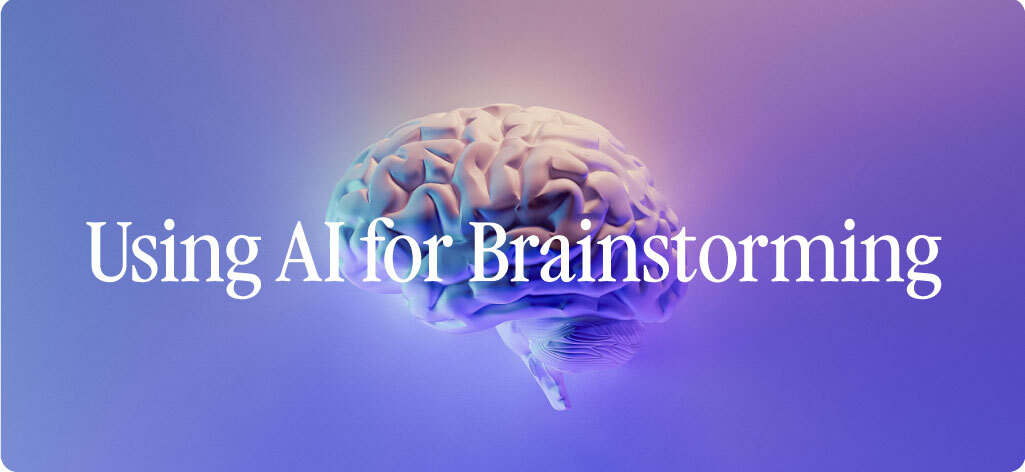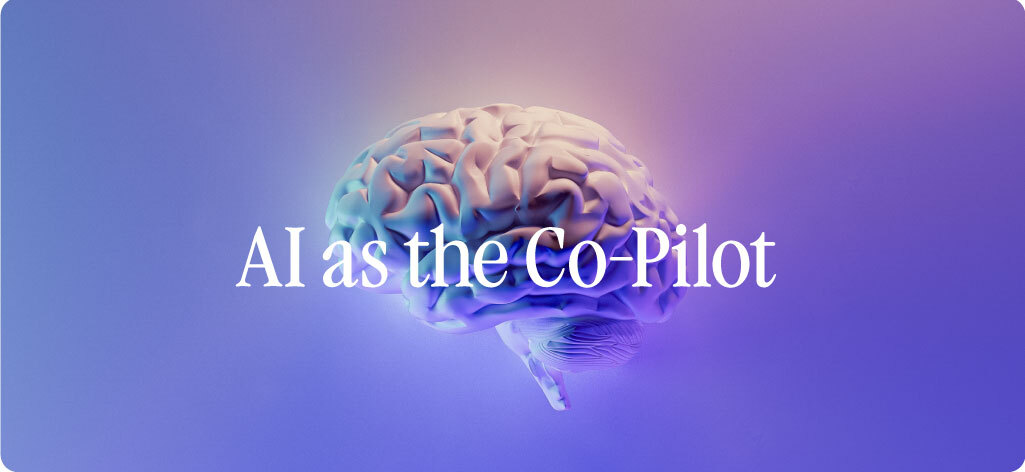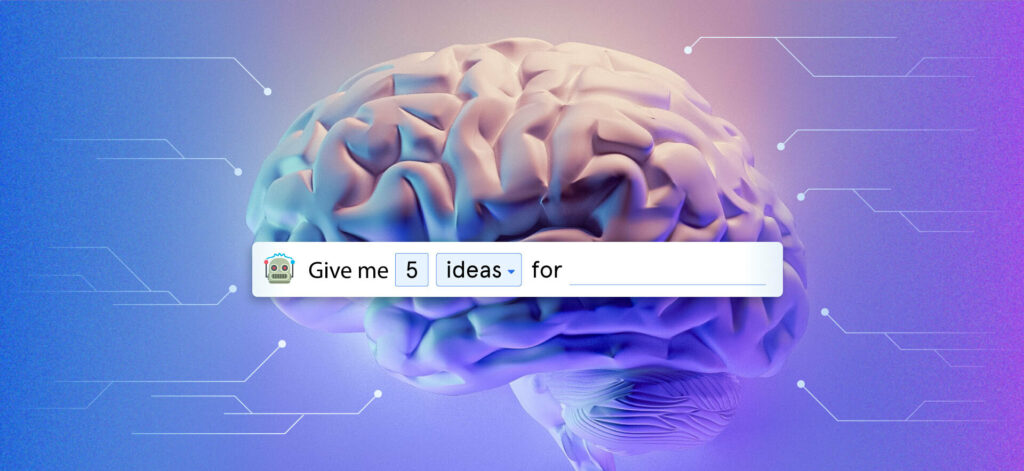by David Gorman
We’ve all had a shower thought – a breakthrough idea that emerges when we least expect it. While I would like to think it’s my shower singing that unlocks those thoughts, I know it’s actually just what happens when we let our minds wander. I can’t help but draw a parallel to – you guessed it – how AI brainstorming tools gives us a different way to come up with novel ideas that our normal thought process doesn’t always produce.
AI brainstorming is the practice of pairing up with a Large Language Model (LLM) partner (e.g. ChatGPT) to generate interesting ideas at-scale, especially when you haven’t had enough coffee to do it yourself.
Since Opal is a platform for marketers, I of course think about this topic through the lens of marketing and marketers. My experience in this field has also led me to strongly believe that AI for brainstorming is more effective for marketers than almost any other role. Why is that?
- Appetite for New Ideas – Marketers are always looking for new and different ideas and approaches to break through to their audiences. Although they are certainly creative people, augmenting that enables them to try even more ideas.
- Volume of Creative Written Work – AI tools powered by LLMs is incredible at language, making it a natural fit for helping where marketers usually start: writing out ideas.
- Marketers Work At-Scale – The sheer amount of marketing work – and the pace of it – is very high. This means that any efficiency gained through automation matters.
At Opal, this is just one of the many ways we’re bringing AI into our platform in meaningful ways. Also, as the technology of generative AI evolves, our platform will evolve with it.
Let’s dig into specific practices that I’ve found work for effectively brainstorming with AI, even when just using ChatGPT. I’ll also get philosophical (in a fun, interesting way!) on what I believe this process should be and what it shouldn’t be, while highlighting what the Opal AI brainstorming tool can do.
How-To: Using AI for Brainstorming

Understanding where ideas come from is something science has always grappled with. What we do know is the feeling of trying to force yourself to have an idea and coming up with nothing. It’s painful, and an all-too-common phase of the creative process. Generative AI gives us a way to get unstuck when we’re in this phase.
While the headlines about AI have been sensationalized on both ends of the spectrum (AI is coming for our jobs!, AI has changed everything!), the more realistic – and truly incredible – outcome is AI as a trusted creative partner. A way to reliably augment our brains, and time, whenever you need it.
For professionals, using brainstorming AI will very rarely be as simple as dropping a prompt into ChatGPT and instantly getting back the perfect idea. It’s a process. One that is nearly as much about what happens in the human mind as the calculus in the robotic one.
For 10 years, my marketing platform Opal has been a space for leading brands to create and calendar marketing content. Naturally, including brainstorming AI was an opportunity to deliver more value to the marketers who trust Opal. The generative AI tool in Opal has been tuned to serve the needs of marketers beyond “stock” ChatGPT 3.5 or 4, and it tightly integrates into existing workflows. In practice, this makes it a more natural artificial-intelligent co-pilot for real marketing work.
However, since chatting with LLM – like ChatGPT – is how the vast majority of people are currently generating ideas with AI, that is where I’ll focus.
These are the primary steps I recommend for most effectively brainstorming with AI to generate valuable, novel ideas:
1. Define What You Want – If you’re explicit about what you want, you’ll get a better result. That holds true when you’re working with people or robots. The first principle of effective brainstorming with AI is to be clear about the deliverable you want. A list of 5-word headlines is appreciably different from a list of marketing tactics – but both could qualify as a marketing idea. Once you’re explicit about the deliverable you want, you can proceed.
2. Set Clear Parameters – Public LLM AI tools have an impressive breadth of context. However, in order to apply that context to your prompt, you need to set effective parameters. This means providing the important first-hand details about the object of your brainstorm. In addition, providing links (when supported, like GPT4 with plugins) or just pasting in examples of prior work proves beneficial. To get the most effective start with your AI brainstorming tool, you should submit both the definition of what you want and your initial set of parameters as your first input into the chat prompt.
3. Refine Your Parameters – With ideal inputs, it’s possible to bottle lightning and get the idea that checks your boxes on the first shot. That doesn’t always happen, but fear not! Frequently, the next stage of AI brainstorming is a form of revision. Here, you’ll refine your parameters. Give the AI feedback like you would a person – what is incorrect, what you don’t like, and different directions to try out. Provide more context if you have it. Present all of this back to the AI, and it’ll automatically combine that with your original prompt.
4. Feed It Examples of Output You Like – That refinement step should help a lot, but sometimes you need to go even further. To continue zeroing in on that final idea, you’ll want to prompt it again in a new way. This time, tell it which ideas are the closest to what you want and ask for more like them. You can get more specific, too: “More like ideas 1 and 3, but consider XYZ details.” The beauty of using AI for ideation is that it never pushes back, never gets tired, and never runs out of ideas. Essentially, there is no limit to the amount of times you can prompt it to ultimately get what you’re looking for.
5. Human Decision – While AI will happily supply infinite ideas, you’re the one that makes the call. While getting a fully-formed “final” idea can certainly happen, I often find that the logical end to working with a brainstorming AI is piecing together a winning concept from the myriad parts the AI produced. Ultimately, you are the one driving the session and you make the judgment call about what meets your needs.
One other common outcome of using AI for ideas is that it can suddenly spark your human creativity. It’s not uncommon to have the AI ideas open your mind to a new direction, ultimately leading you to come up with the perfect approach. After all, a good brainstorm is really about uncovering the right general direction – not always nailing the specifics right away.
Our Philosophy: AI As the Co-Pilot

While we’ve outlined a good framework for brainstorming with ChatGPT, or any LLM, it’s important to talk about the philosophy behind it.
This principle informed my development of Opal’s AI brainstorming tool, and more broadly, my view on leveraging AI in Opal in general. While artificial intelligence is a tremendously powerful partner, humans must remain in control and must make the decisions.
I don’t mean this in some high-minded, Asimov Laws of Robotics kind of way. I mean this practically: you know what ideas are good and what ideas are bad. Especially as a marketer, you know what good looks like. Since AI has the ability to ideate endlessly, you are most valuable for your ability to make decisions. You, with the context of your brand, will best know which ideas are good, why they are good, and what happens when you employ those ideas.
The threat here is less of a Skynet future and more of a huge SNAFU at work. The risk is that if you trust too much to an impartial and ultimately disconnected authority, you will stop thinking critically about the work.
Bottom line: while the machine can produce endlessly at your behest, you are responsible for the outcome. That’s a good thing!
What to Look for in an AI Brainstorming Tool
While brainstorming with ChatGPT is very functional (and many of you will take this guide to do exactly that), it may not be the best solution. The best AI brainstorming tool is one that is tailored to your job and type of work, and efficiently integrates into your process and workflow.
For example, the marketers who brainstorm in Opal do so with an AI co-pilot that is fine-tuned to generate quality ideas that are practical for the types of brands we serve. This makes idea generation more accurate and relevant right away. Does this mean that there is no need to refine your parameters? Of course not, but you’re starting from the best possible place.
All About the Opal Platform
Tailored to address the unique requirements of marketers, Opal functions as a true purpose-built marketing planning platform. Trusted by leading brands like Target, Starbucks, GM, and numerous others, Opal empowers the foremost marketers in the world to plan, create, and calendar their content in a central hub – backed by an AI co-pilot.
If you think Opal might be a fit for the marketers, communicators, and creatives at your organization, I’d love to put you in touch with my team. Schedule a custom demo right here to see the platform in action. During your demo, a specialist will guide you through the capabilities of Opal, with a specific focus on addressing your individual marketing needs.


